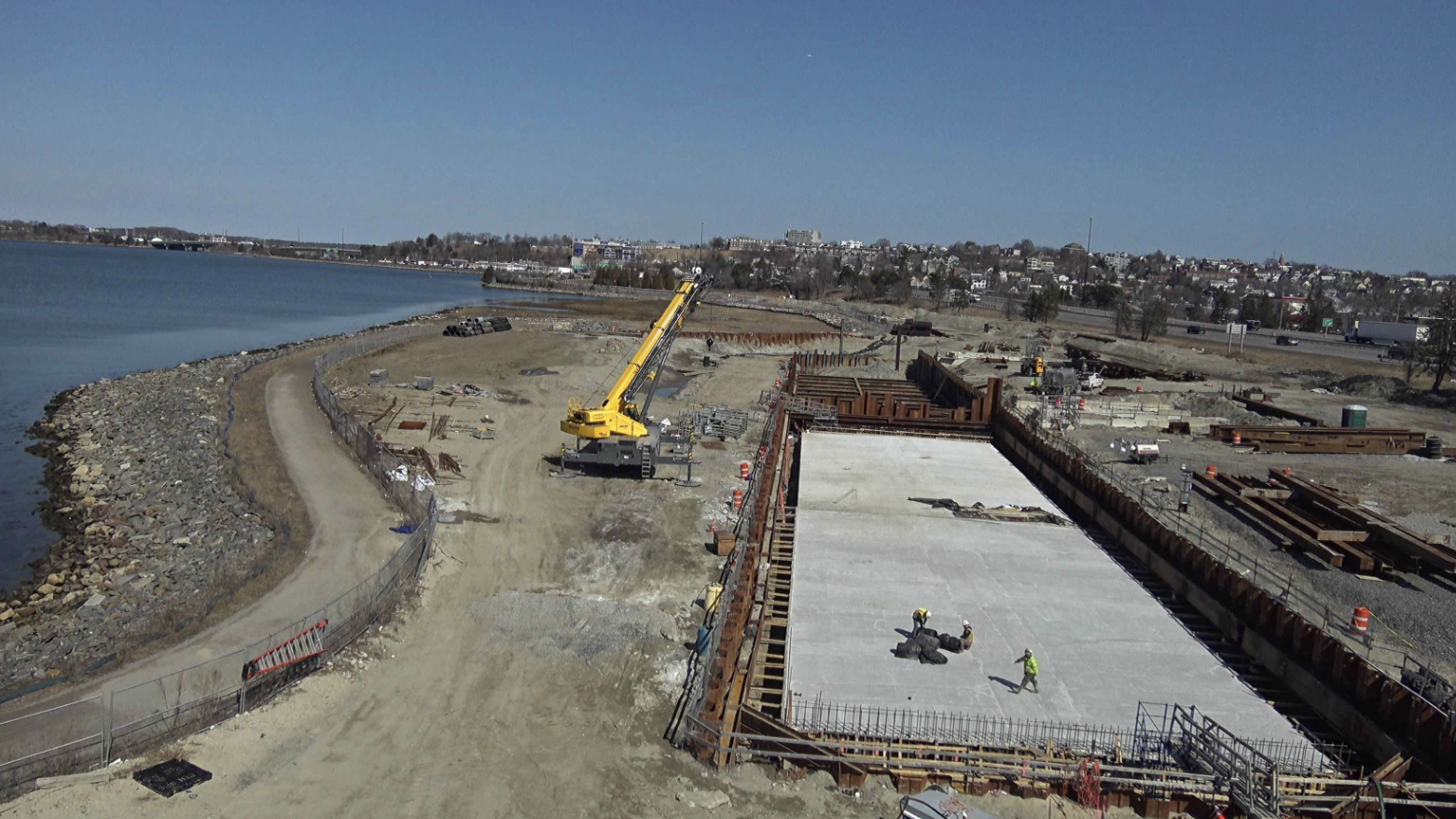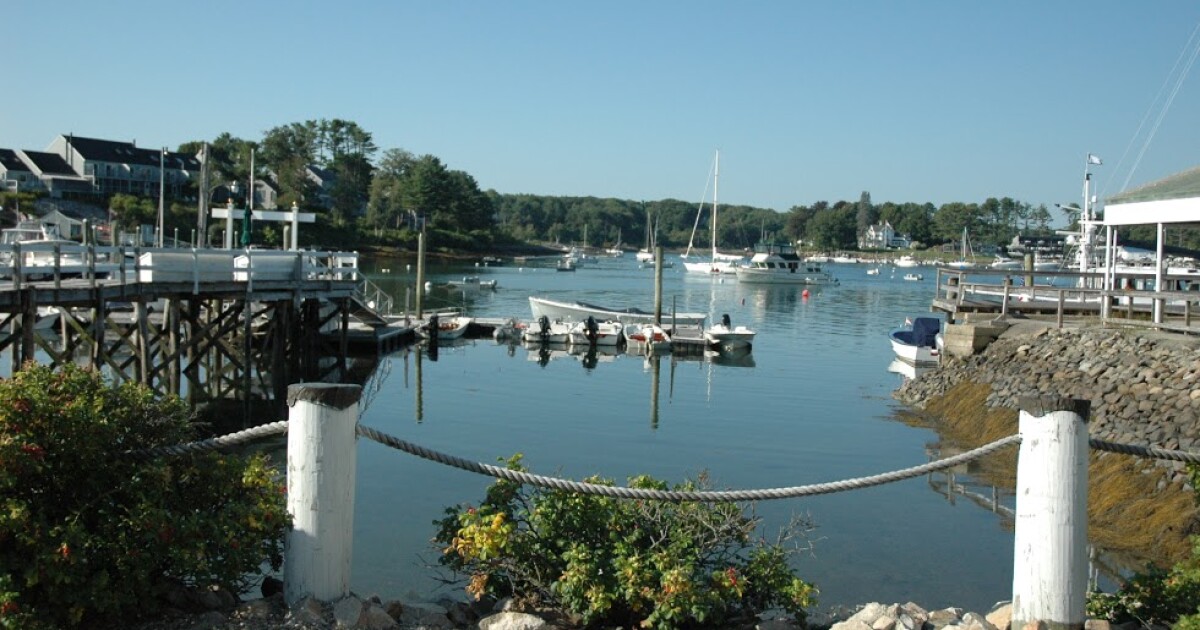Maine
Maine’s aging wastewater facilities adjust to meet new challenges

Gravity is a friend of wastewater treatment plants, which is why the facilities are typically placed at low elevations, often along Maine’s extensive coastline.
Placing them in low-lying areas makes it easy to collect wastewater from uphill sinks and toilets. And placing them near waterways makes it easy to discharge filtered and disinfected water, or effluent, back into our rivers, reservoirs and harbors.
Many wastewater facilities in Maine and across the country were built after the Clean Water Act passed in 1972, meaning some are now 50 years old. They need upgrades not only given their age, but because of threats posed by climate change. Coastal facilities now see regular flooding during storms and high tides.
“Floodwaters can damage or destroy pumps, blowers and electronics kept in basements,” said Robert Lalli, the Wiscasset wastewater treatment plant superintendent. “And if salt water gets into sewage aeration tanks, it can disrupt the microbiology necessary to break down sewage and other hazardous compounds. Untreated sewage can then overflow into waterways, harming wildlife and those who fish for a living.”
It can also put Maine’s sources of drinking water at risk.
With the help of $40 million in federal funding, Maine communities are finding new ways to deal with threats to their wastewater plants.
The most common approach is to elevate tanks and buildings, and make other structural improvements that protect facilities from sea-level rise. This is happening all along the state’s coastline, from Kittery to Eastport.
In Machias, for example, a new pump station will keep the plant operating during heavy rains, which will help prevent sewage overflows like those that caused clam flat closures on the Machias River.
“More and more intense storms are working against us,” said Mike Riley, the combined sewer overflow abatement coordinator at the state Department of Environmental Protection. “But the new pump station, which will hopefully be up and running by the end of this year, will significantly reduce, if not prevent, overflows.”
The nearly $3.6 million project was paid for largely through a DEP grant.
Machias also plans to add a combination of seawalls (vertical or near-vertical walls) and berms (raised and sloping banks), which will protect the facility and downtown streets while creating a scenic river walk. This project is in the designing and permitting phase, said Dr. Tora Johnson, who runs a GIS Lab at the Machias-based Sunrise County Economic Council.
Portland, meanwhile, is installing four underground tanks that will hold millions of gallons of stormwater and wastewater, and keep its facility from backing up — and sending untreated wastewater into the nearby tidal basin, Back Cove.
“This pollution-control effort has been in the works for some time,” said Bill Boornazian, Portland’s water resources manager. “But the need is growing due to sea-level rise and regular flooding.”
“The biggest climate change challenge we have is intense rain events in the winter when the ground is frozen,” Boornazian added. They make the ground “like asphalt,” he said, noting that the new tanks will improve drainage and reduce flooding of city streets.
Portland is scheduled to start using the new tanks in December, said Brad Roland, a senior project engineer with the city’s Department of Public Works. He said the project, which began before the pandemic, will cost around $42 million.
The Ogunquit Sewer District plant sits on a long, sandy peninsula between the Ogunquit River and the ocean. At this picturesque and vulnerable spot, a second story is being added to a garage for increased office space, and the existing tank walls will be made taller, according to Philip Pickering, the sewer district superintendent. The electrical equipment and generator at a nearby pumping station will also be elevated.
But it’s only a temporary fix. A 2012 study found there was “no practical solution” that would allow the site to host a wastewater treatment plant beyond 2052 because of the “elevated risk from sea-level rise, flooding and shoreline erosion.”
Ogunquit is raising funds to relocate the facility about two miles west of its current location. The move, likely to occur between 2040 and 2055, is estimated to cost $30 million.
Facing a similar dilemma, Wiscasset officials hope to move the town’s facility as soon as a suitable site is found. The current location on the Sheepscot River is “the lowest point in Wiscasset,” said Lalli.
“We’ve had salt water come through our gates and into our tanks,” he said. “A seawall is impractical. If we moved up just three or four blocks, we’d be fine.”
If officials find a site close to the current location, it will cost around $35 million. If the new site is farther away and requires additional pipe laying and pumping stations, Lalli said, the cost could rise to at least $45 million.
Lynda DeWitt
Longtime editor and writer Lynda DeWitt has written about natural history for many organizations, including the National Geographic Society, Discovery Communications, Scholastic Productions, and Smithsonian’s National Academies of Sciences. She is the author of “What Will the Weather Be?” and splits her time between Maine and Maryland.

Maine
6 Must-Visit Outdoor Live Music Venues in Maine

Ah, summer in Maine. The sun is shining, the air is warm, and the time to enjoy the great outdoors is here. If you’re like me, one of the my favorite things to do in the summer in Maine is see some great live music…outdoors!
Whether you’re into rock, pop, folk, blues, or something else entirely, there’s probably a venue hosting a summer show that you will want to see. I came up with a little guide to some of the best spots to catch some great bands perform under the open sky this summer.
492021697
1. Thompson’s Point – Portland
Thompson’s Point in Portland is a prime spot for outdoor concerts. This summer, they’ve locked in big names like Counting Crows, Flaming Lips, Guster, Primus/Coheed and Cambria, Lake Street Dive, Goose along with others. This venue has the perfect summer vibe along with beautiful views of the Fore River, which make it a must-visit for any music lover. Plus, it’s just a short distance from downtown Portland, so you can make a whole day of exploring the city before the show. Oh, did I mention the sunsets there are priceless?
Lauryn Hottinger
2. Maine Savings Amphitheater – Bangor
Maine Savings Amphitheater is a gem in Bangor. Maine’s largest outdoor venue offers a solid lineup each summer that include all different genres from rock, pop, country and beyond. From big names like Hootie & The Blowfish and Smashing Pumpkins to Niall Horan and Kenny Chesney, this recently renovated venue is perfect for those looking to see major acts in an outdoor setting. The waterfront location also adds a nice touch.
3. Snow Pond Center for the Arts – Sidney
I’ve seen a few shows at Snow Pond Center for the Arts and I absolutely love this venue. the place to be. Located on Lake Messalonskee, it offers all the summer vibes for enjoying live music. You can bring your chairs or blankets and set up towards the back or if you’re like me and want to get right into it, there is a general admission standing area near the stage. There’s no better venue to check out the legendary Beach Boys! They will be there this summer along with the Indigo Girls and others.
4. Thomas Point Beach & Campground – Brunswick
For those who enjoy a festival atmosphere, Thomas Point Beach & Campground in Brunswick is perfect. They host events like the Point Reggae Arts & Music Festival and the Thomas Point Beach Bluegrass Festival. This venue is also perfect for those who love to camp out and enjoy multiple days of music.
5. L.L. Bean Summer in the Park – Freeport
Freeport’s L.L. Bean Summer in the Park series offers free outdoor concerts right in Discovery Park.. yes, free. This is a great option for families or anyone looking to enjoy some live music without having to dig into the wallet. With a diverse lineup and a relaxed atmosphere, these concerts are the perfect way to spend a summer evening. Don’t forget to bring your chairs.
Outdoor free jazz concert on grass in summer
6. Wells Harbor Park – Wells
Wells Harbor Park is a great venue that hosts a summer concert series every Saturday evening. These concerts that take place in a gazebo might not be big national recording artists, but it won’t matter as your overlooking the harbor on a beautiful day while watching live music, it doesn’t get much more summer than that! Expect an intimate setting, great way to unwind after a day at the beach or a hike.
2024 Concerts in Maine, New Hampshire, and Massachusetts
Check out this list of the biggest shows coming to New England in 2024. As more concerts are announced, we’ll add them to this list.
A List of Maine’s Longest Running Music Venues
Have you ever been to a show or concert that gave you memories to last a lifetime? Maine has produced some of the best shows, housed by the longest-running concert venues. Let’s take a peak at the longest-running venues in Maine.
Gallery Credit: Lizzy Snyder
Maine
Report says there was 'utter chaos' during search for Maine gunman, including intoxicated deputies

The search for the gunman behind last October’s mass shooting in Maine was marked by “utter chaos,” including one group of deputies who had been drinking nearly crashing their armored vehicle and others showing up in civilian clothes who could have been mistaken for the suspect, according to an after-action report obtained Tuesday by The Associated Press.
The Portland Police Department report describes how officers rushed to secure the scene where the gunman abandoned his car after killing 18 people in the state’s deadliest shooting. Tactical team leader Nicholas Goodman said in the report that the officers who showed up without any orders risked doing more harm than good.
MAINE SHERIFF HAD PROBABLE CAUSE TO DETAIN MAINE GUNMAN BEFORE MASS SHOOTING, INDEPENDENT REPORT CLAIMS
A second tactical team that was also responding to the incident, from Cumberland County, nearly crashed their vehicle into his, according to Goodman.
Crime scene tape still surrounds Schemengees Bar & Grille, Oct. 29, 2023, in Lewiston, Maine. An independent commission investigating the deadliest shooting in Maine history plans to take up accusations in a report that contended self-dispatching police officers created “chaos” during the search for the gunman, but may not address an allegation that deputies in an armored vehicle had been drinking before nearly crashing into another armored vehicle. (AP Photo/Matt York)
“It locked up its brakes and came to an abrupt halt with the tires making a noise a large 18-wheeler makes when it stops abruptly while carrying a copious amount of weight,” he wrote. “I’d estimate the armored car came within 20-30 feet of striking our armored car and most likely killing a number of us.”
“You could smell the aroma of intoxicants” wafting from the Cumberland vehicle, whose occupants told him they had come from a funeral, he said.
“I have never seen the amount of self-dispatching, federal involvement with plain clothes and utter chaos with self-dispatching in my career,” Goodman wrote.
Cumberland County Sheriff Kevin Joyce said in an earlier statement that an internal investigation had cleared his officers and that no one was determined to be intoxicated at the scene. He said any report of intoxicated officers should have been raised at the time, not six months afterward.
Daniel Wathen, the chairperson of an independent commission investigating the shooting, said commissioners intend to address some of the report’s “disturbing allegations” but others may be outside the panel’s scope, including the allegations of drinking.
The nine-page report, which was partially redacted, was obtained by the AP through the state’s Freedom of Access Act.
Both the Cumberland County Sheriff’s Office and Portland Police Department tactical teams were responding to a location where the shooter’s vehicle was abandoned by the Androscoggin River the evening of Oct. 25, after the gunman, an Army reservist, killed 18 people and wounded 13 others at a bowling alley and a bar in Lewiston. The gunman’s body was found nearby two days later after he died by suicide.
The commission previously heard testimony from law enforcement officials about the chaotic hours after the shooting in which agencies mobilized for a search and police officers poured into the region. The panel reconvenes Friday to hear from witnesses on communications and coordination problems.
CLICK HERE TO GET THE FOX NEWS APP
The Portland report was especially critical of self-dispatching officers. The report suggested officers who arrived to help in plain clothes — “similar clothing to the suspect” — created a dangerous situation in which officers could have exchanged fire with each other in a wooded area near the abandoned vehicle.
Tactical vehicles used by the Cumberland Sheriff’s Office and Portland police apparently were not aware of each other’s presence. The Portland team, which arrived first near the site of the gunman’s vehicle, was attempting to keep police cruisers off a bridge where lights were transforming officers into potential targets.
Maine
York voters narrowly defeat short-term rental regulations

York residents narrowly voted down a referendum to regulate short-term rentals.
The measure would have required all short-term rental owners to register and secure a three-year permit for their properties with the town. The referendum failed over the weekend by 241 votes.
The proposal sparked dueling campaigns within the town of York this spring.
An opposition group argued that many of the requirements were too onerous for some property owners. Proponents said regulations were needed to better track the number of short-term rentals in the town, and to preserve the quality of life in York neighborhoods.
-

 News1 week ago
News1 week agoSkeletal remains found almost 40 years ago identified as woman who disappeared in 1968
-

 World1 week ago
World1 week agoUkraine’s military chief admits ‘difficult situation’ in Kharkiv region
-

 Movie Reviews1 week ago
Movie Reviews1 week agoAavesham Movie Review
-

 Education1 week ago
Education1 week agoVideo: Protesters Scuffle With Police During Pomona College Commencement
-

 World1 week ago
World1 week agoEU's divided right wing can disrupt if it finds greater unity: experts
-

 News1 week ago
News1 week agoNevada Cross-Tabs: May 2024 Times/Siena Poll
-

 World1 week ago
World1 week agoPro-Palestinian university students in the Netherlands uphold protest
-

 News1 week ago
News1 week agoStudent protests caused mostly minor disruptions at several graduation ceremonies








/cdn.vox-cdn.com/uploads/chorus_asset/file/25459708/Screenshot_2024_05_22_at_9.08.56_AM.png)











